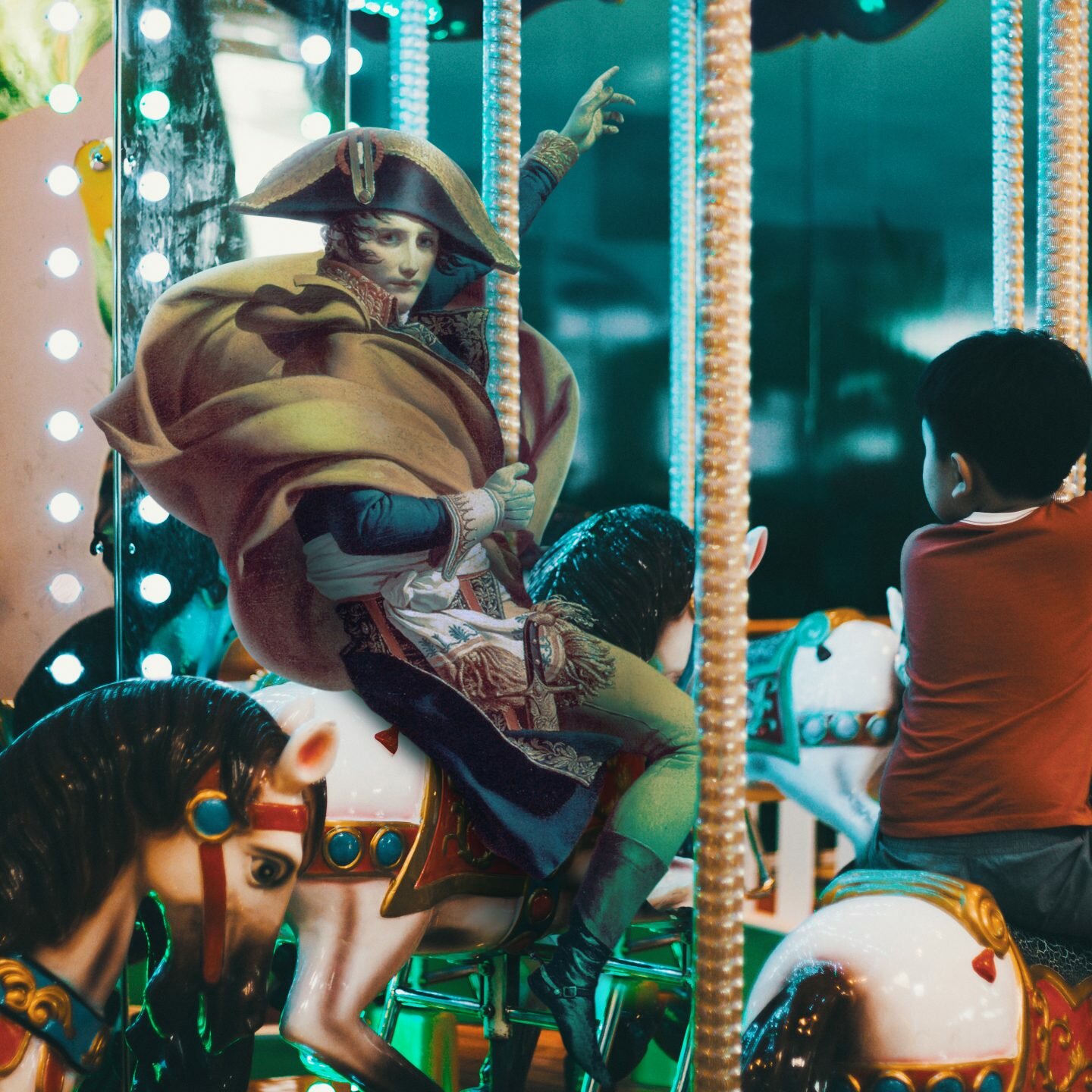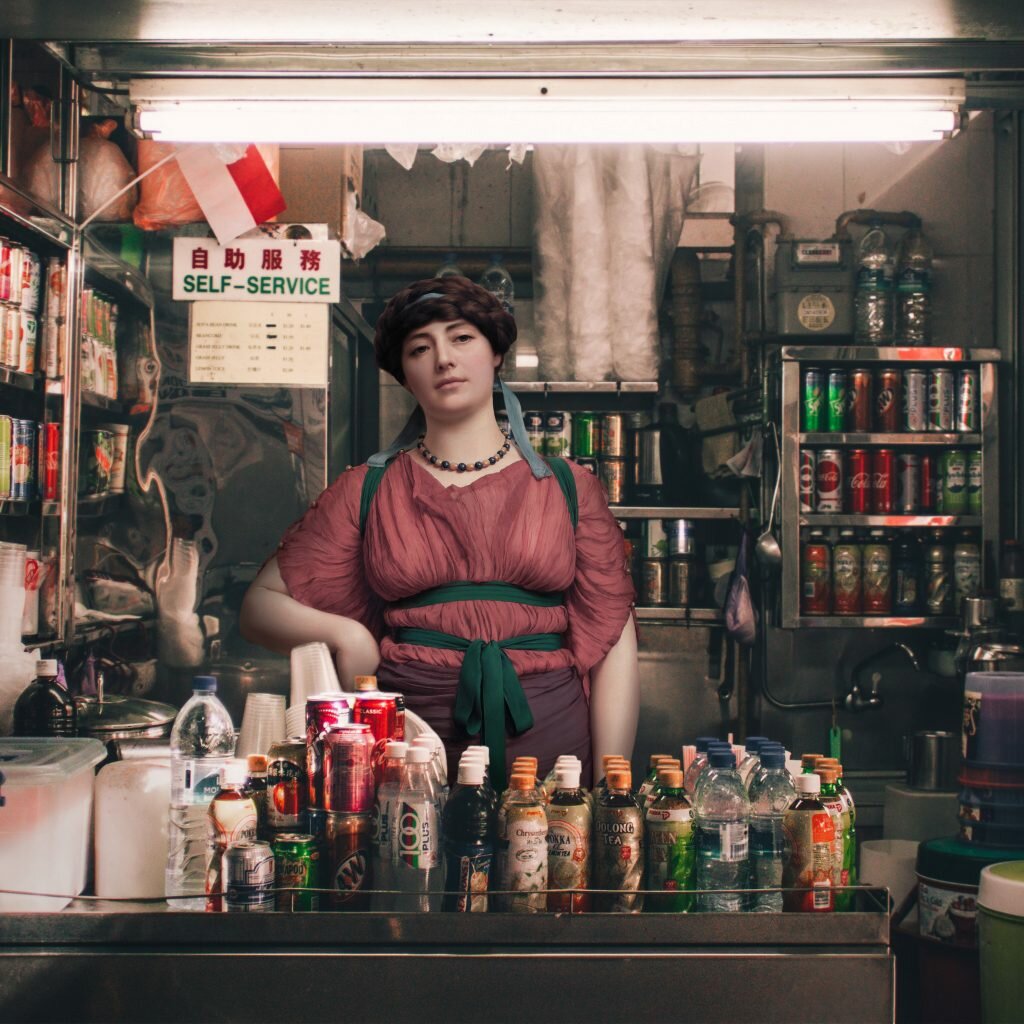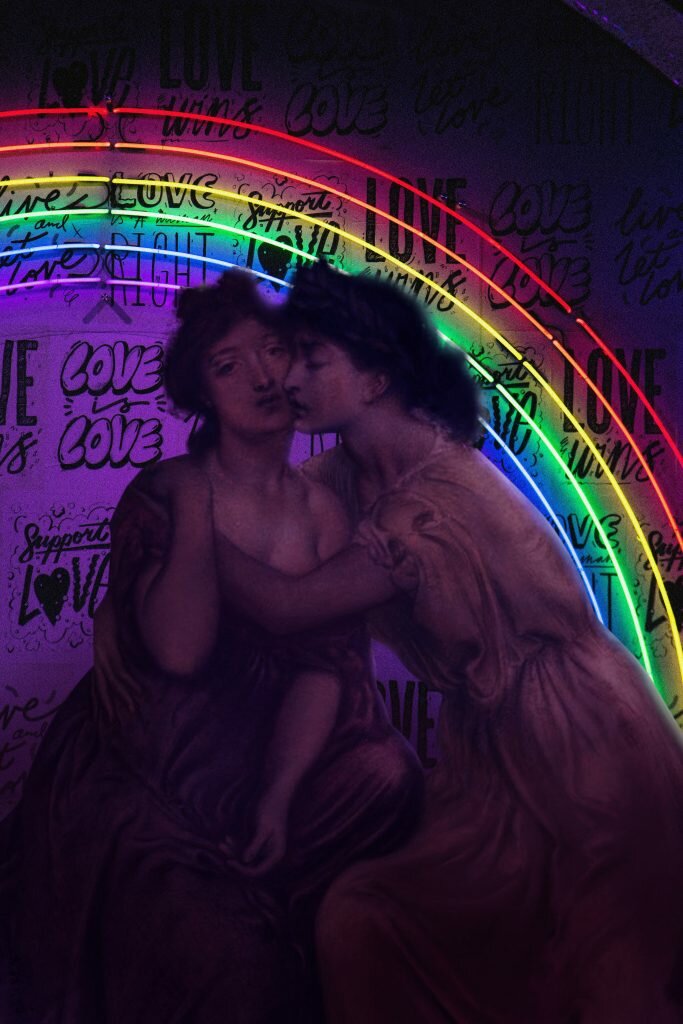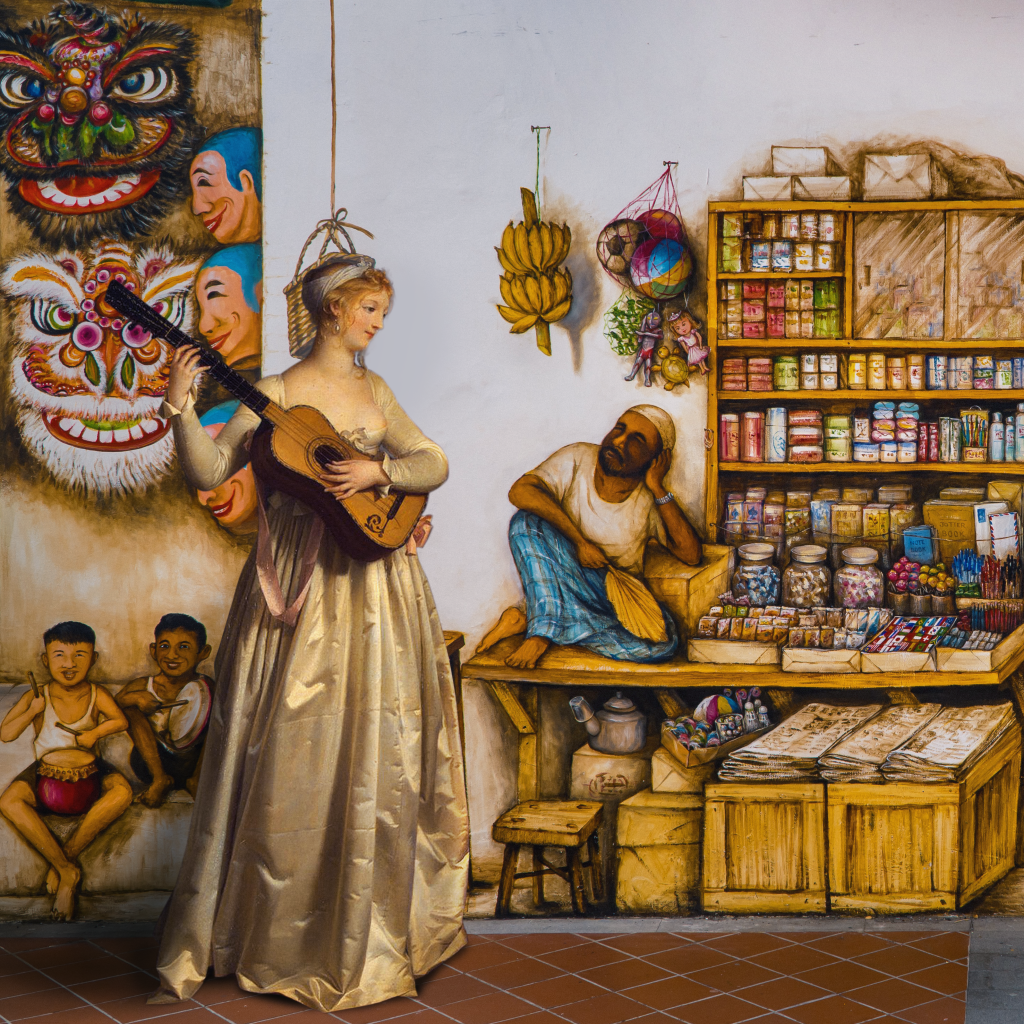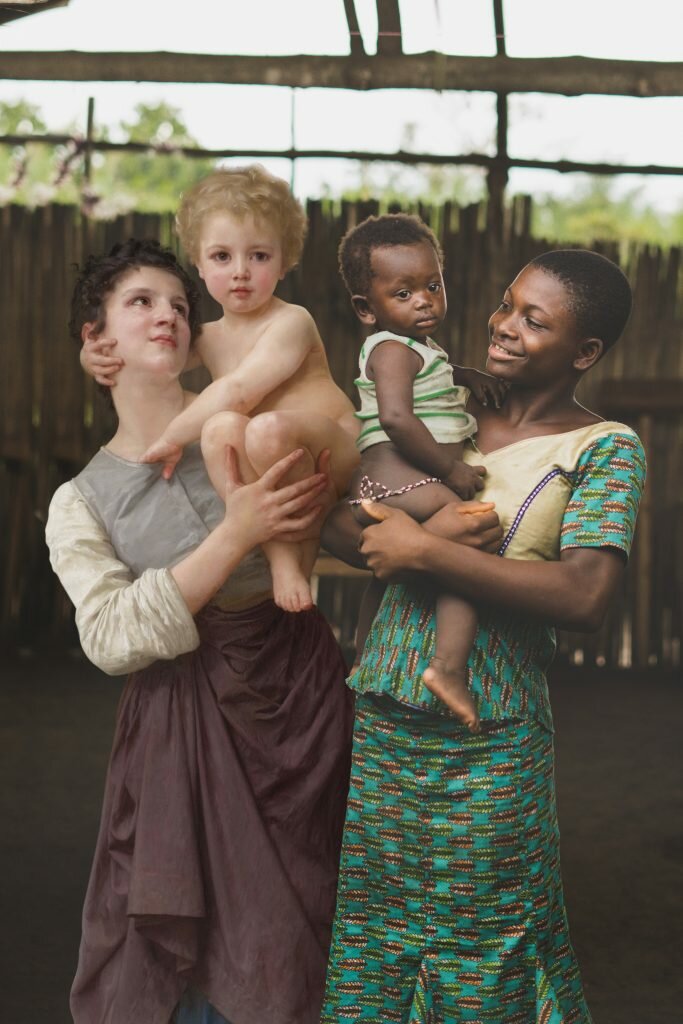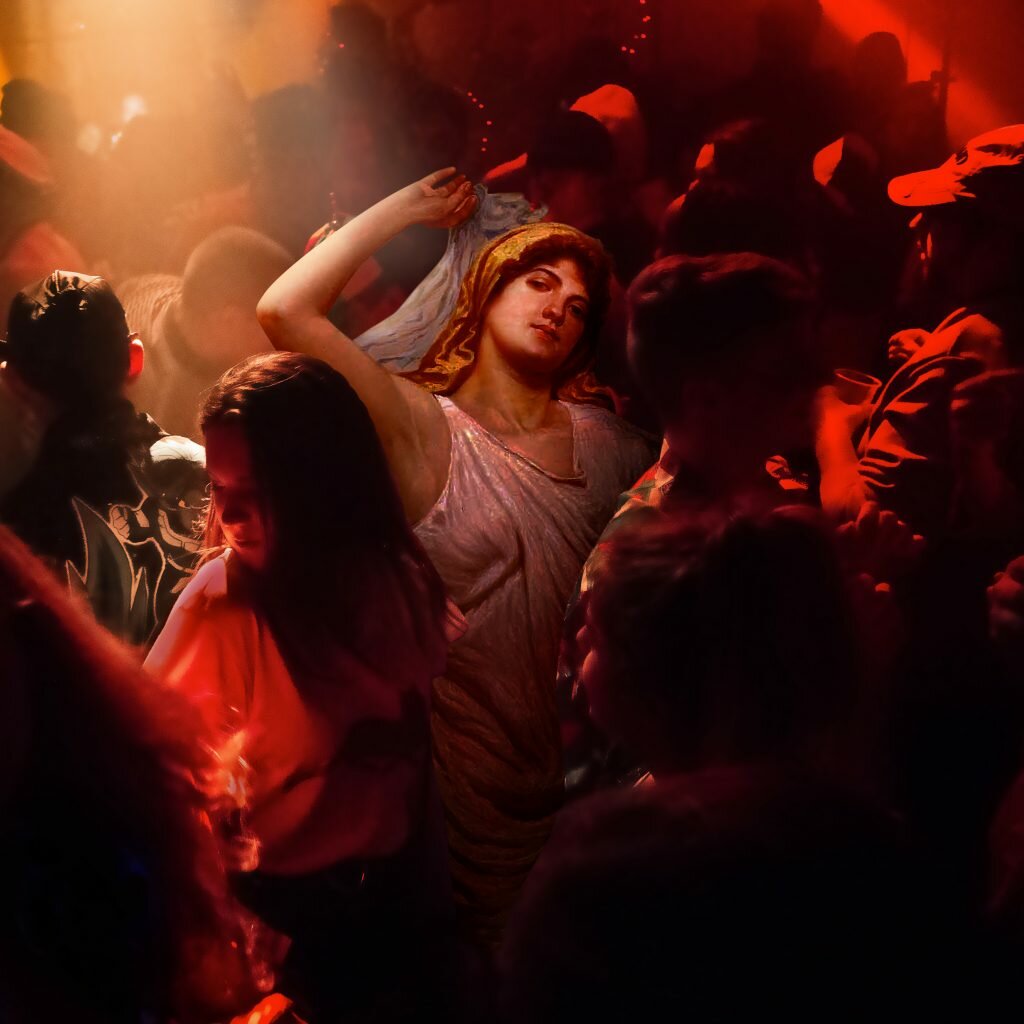Excuse me, is that Napoleon on a fairground carousel?
Why, yes. And the artwork is aptly named Napoleon Just Wants to Have Fun. It is but one in a series of provoking and often humorous digital creations by The Next Most Famous Artist, who reimagines classical paintings by re-staging their protagonists in contemporary settings.
“Many of us are familiar with [Napoleon Crossing the Alps (1801-1805)], the painting of Napoleon valiantly riding a horse with a heroic and authoritative pose. What if he could break out of this mould and just have fun?” asks Hafiiz Karim, whose moniker pokes fun at our preoccupation with social media virality.
“So that’s just what I did. I put him on a carousel horse to remind people that while adult life has taken over our lives, it’s worth being reminded to have fun and let the innocent child in you be free.”
Instagram, with its immediacy and ready audience, is Hafiiz’s primary exhibition space and portfolio; though a limited selection of signed prints have popped up on the walls of venues such as Mediterranean restaurant Riviera Forlino, and are available for purchase.
His creations include Girl With A Gas Mask, which swapped out the improbably large pearl earring in Johannes Vermeer’s Girl with a Pearl Earring (c1665) for a respirator, as the Girl sits in an SMRT bus (#covid_19). There’s also Drink Stall Auntie, which sees Amazon queen Eurypyle from John William Godward’s Eurypyle (1929) transposed into a heartland coffee shop. A monochromatic series also dives into the Black Lives Matter discourse.
Provenance: Eurypyle by John William Godward (1920)
Inspired by fond memories, this is a tribute to drink stall aunties — an iconic figure in hawker culture — who are always welcoming and unpretentious.The Next Most Famous Artist
“The process of recontextualising the classical figures from their original setting and mashing it up with other cultures and settings, like the modern Singapore setting, shows how fluid identity is and how much control we have of our own identity and how easily it is manipulated,” says Hafiiz.
A digital art director by day and artist by night, the 28 year old has always been interested in the ways art from different cultures and periods influence an artist’s body of work — one of the reasons why he pursued graduate studies in Asian art histories.
Of his own mashups, he says: “The series represents more than creating interesting and relatable art. It is the democratisation of creativity where the original works that used to hang on the grand and sacred walls of the gallery space for the elites are now breathing and taking on new life in the social media realm for the masses,”
Hafiiz curated this set of images for A Magazine’s October 2020 Identity Issue.
Provenance: Sappho And Erinna In A Garden At Mytilene by Simeon Solomon (1864)
Arrested for homosexual offences, Solomon was shunned even by those who encouraged him to explore same-sex desire in his art. This work is a reminder that love is love, and that we should support one another without hate or discrimination.The Next Most Famous Artist
Your moniker is a take on The Most Famous Artist (American conceptual artist Matty Mo), but is there more meaning to it?
The Next Most Famous Artist was born as a reaction to the growing attention given to virality and popularity in the social media landscape. I wanted to create a persona that pokes fun at this drive for fame and success.
Do you actively seek to make work that’s accessible and relevant to a wider audience?
Social media has really changed the way people experience and share art. It influences the creation of my art. I wouldn’t say that I actively make art to make it relevant to the mainstream audience. Most of our generation have been exposed to the language of social media, memes, and remix culture. TikTok for example has contributed to the appreciation of creative spins on existing content. This is evident of my current body of work where I appropriate classical works and superimpose them into modern settings.
However, as much as I am aware of the power of social media, my art-making process is very much about reflecting the times. And how it is received by the audience is quite unpredictable. Social media allows viewers to share and comment on the work and put their own perspective in it. This puts the power of narrativity into the hands of viewers which breathes new life into the artwork.
Provenance: Painter When Painting A Portrait Of A Lute Player by Marguerite Gérard (before 1803)
In the original, the lute player is merely a muse to the painter. Here, she finds purpose in her music, even as she enjoys spending time with a friend.The Next Most Famous Artist
Provenance: Frère Et Soeur by William-Adolphe Bouguereau (1871)
Taken on “tour”, the time-travelling classical figures join a mother and child in Africa in an intercultural celebration of motherhood.The Next Most Famous Artist
Why transport classical art figures into the real world?
This style of remixing art history with contemporary elements is nothing new. But when I was doing my master’s degree, the thought of appropriating these classical figures into familiar situations that I’ve experienced intrigued me. The series represents more than creating interesting and relatable art. It is the democratisation of creativity where the original works that used to hang on the grand and sacred walls of the gallery space for the elites are now breathing and taking on new life in the social media realm for the masses.
Once that framework is established, I am able to explore multiple social issues like gender and sexual identity, consumerism, and national identity.
Is it important for artists to add to the commentary of social issues?
I believe that it is not only important to do so, but it is an innate duty for artists like painters, sculptors, musicians, and poets to reflect the current times. It does not have to be an explicit socio-political piece of art but it has to be created with the intention of conveying thoughts and ideas. Art has the power to unearth the truth in ourselves, the community we live in, as well as the world at large. Even as human beings, we are all trying to navigate ourselves through this mess of our reality. So how can you not reflect on the times if you are creating any form of art?
Provenance: The Dance Of Salome by Robert fowler (1885)
Her gaze to the viewer is not one of sexual hunger — she is confident, independent, and assertive. She doesn’t care about social constructs. She fearlessly dances in the face of authority.The Next Most Famous Artist
What is it like creating and putting a piece out there to be seen by an audience?
When I create art, everything else around me goes grey and disappears leaving just me and my art.On another level, I feel quite vulnerable each time I post a work that I have emotionally invested in. But then I realised that the work is no longer about me. It starts with me, and it goes on into the world for other people to attach their own meaning to it.
And what if you were to lose the ability to create art?
I think that question alone is heart-piercing. If I don’t make art, my soul will just shrivel up and wilt. I wouldn’t be able to exist. It is as important to me as any bodily function.
